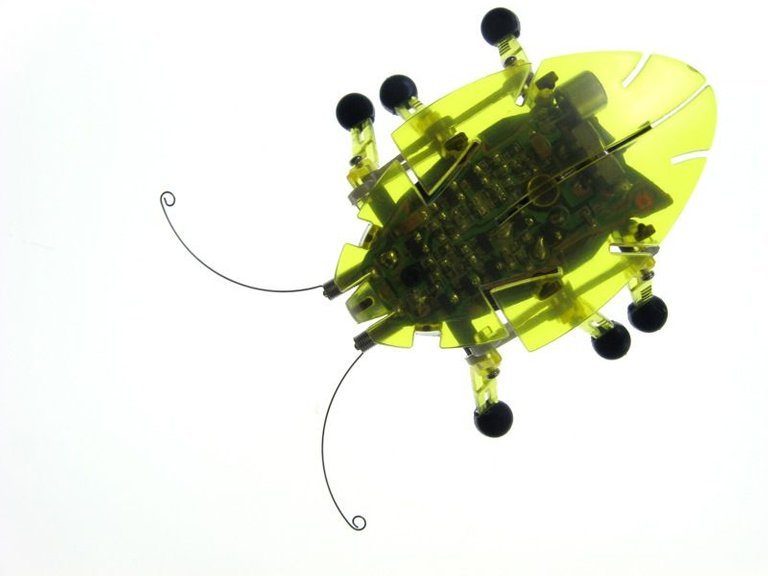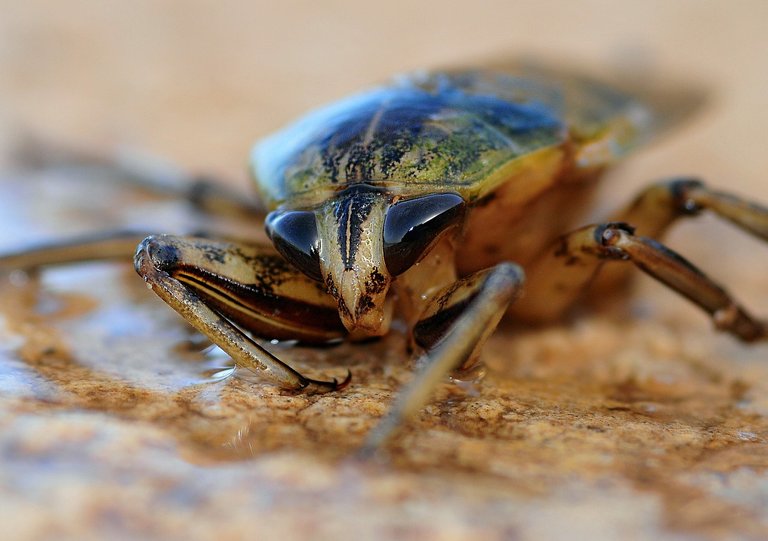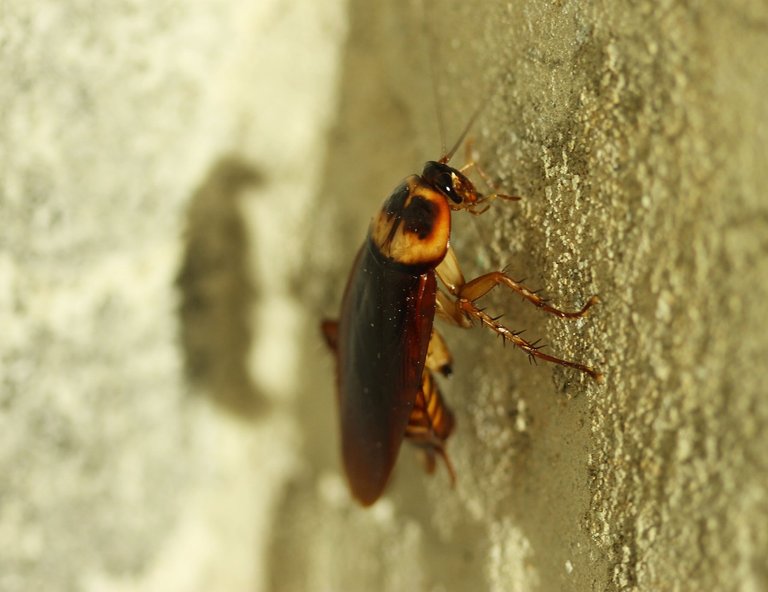Simply put; robobugs or cyborg insects are electronically altered insects developed to carry out a specific task. For long, scientists have manipulated insects with electronic devices for a variety of purposes.
Cyborg insects would be useful in situations where it might be dangerous to use humans. With a mounted mini-camera they could enter broken sewers, collapsed buildings, or even war-zones to gather data. Source
Cockroaches are the most studied group of insects in robobug experiments for obvious reasons. They are unique bug and can survive most conditions that can kill several other insects. For instance, they can withstand long period of food deprivation, being submerged in water and harmful amount of radiation.
One problem that is militating against wide scale applications of the current model of robobugs for many years has been the issues of power instability (i.e electrical energy or electricity). In some cases, many batteries that are compact enough to fit on the bugs could not provide a steady supply of electricity to keep the advanced gadgetry running for long. In other scenarios, most electronic sensors fitted on the insects would require them to be in continuous motion or go close to a light source, all in a bid to continue to generate electricity. In pursuit of solution to the prevailing power handicap, research interests for a many years have been to develop ways electricity could be generated from chemicals inside living things to be used to power implanted sensors or micro-devices. The primary aim here was to have a model of robobugs that's completely self-sustaining — generating the requisite electricity needed to power micro devices outfitted on them for whatever purpose, and thus being independent of external power sources. After many years of elusive solution, a team of researchers working at Case Western Reserve University successfully converted a cockroach's internal chemicals to electrical energy. This was achieved by implanting a small biofuel cell into a living cockroach, which then reacts with a naturally occurring sugar within the insect’s body and oxygen from the air, converting them into electricity. According to the paper which was published in the Journal of American Chemical Society, the finding represents a positive step towards having a steady source of power that could potentially be used to power sensors, cameras, and other microdevices that are attached to the insects (robo-bugs or robo-croaches) for whatever purpose. In many ways, this is far more advanced than the current model of robobugs where the electronic insects need to be near a source of light or in continuous motion to continue to generate electricity. In this case, with biofuel cell implantation, food that the cockroach eats is converted into natural electricity. "As long as they are eating, I can just tap into their blood and [turn] their chemical energy into electrical energy," Daniel Scherson, the Senior researcher and a professor of Chemistry at Case Western Reserve University, told LiveScience. Although the electricity so generated is quite small because the biofuel cell is very slow at converting the sugar into energy, the approach is a better alternative as it does not rely on movement, light or batteries to generate electricity but normal feeding. Besides, electricity so generated could be stored in a battery and used in bursts. The key to the success of the research in which chemical energy was converted to electrical energy, was the development of two-enzyme electrodes. Naturally, cockroaches produce a type of sugar known as trehalose from foods they eat. As the electrodes are safely implanted, the first enzyme known as trehalase which is active on the anode electrode breaks the trehalose surgar into two simpler forms known as monosaccharides. These monosaccharides are then oxidized to produce different products by the second enzyme and release electrons. Electrical current is generated as the released electrons are drawn to cathode where Oxygen from air captures the electrons and is reduced to water as a byproduct. “Insects have an open circulatory system so the blood is not under much pressure,” Ritzmann explained. “So, unlike say a vertebrate, where if you pushed a probe into a vein or worse an artery (which is very high pressure) blood does not come out at any pressure. So, basically, this is really pretty benign. In fact, it is not unusual for the insect to right itself and walk or run away afterward.” Source Having found that the test cockroaches suffer no long-term damage following the electrode implantation, the researchers are currently exploring several ways to put finishing touches on the discovery with a view to making it a more acceptable alternative to current models of robobugs in use today. Such steps being explored currently in this regards include (but not limited to): miniaturizing the fuel cell so that it can be fully implanted and allow an insect to run or fly normally; investigating materials that may last long inside of an insect, working with other researchers to build a signal transmitter that can run on little energy; adding a lightweight rechargeable battery. Source Thanks for reading. Yours truly,
[source: Wikimedia commons. Author: midorisyu. CC BY 2.0 licensed]

[Source: pixabay CC0 licensed]

[Source: pixabay CC0 licensed]
References for further reading
@eurogeeJoin us on Telegram and whatsaap through the below links:

Don't Exit Without Voting For Witnesses!
No Witnesses = No Steem Blockchain; If You Truly Love Here, Vote For Witnesses NOW!
Click This Link To Vote Now
Witnesses are equivalent to life and blood of steem blockchain. Without them, the blockchain will seize to function and we will all be stranded here. Click here to read more on why it is important to vote for witnesses


Wow this is amazing
Of course!
This is a great and innovative idea. However such little creature like cockroach can easily be used by the enemy to spy and obtain information from people unless there is going to be a way to detect cockroach cyborg from ordinary cockroach at homes.
Thanks for visiting
Are you kidding me?
This is really mind blowing
Wow!!! So innovative
"Power of Cockroach"
Yes indeed
A useful technology. I can see its use in espionage. Easy to infiltrate anyplace while going about unnoticed. The future of miniature robots capable of running past a lot of security is both scary as well as exciting.
Yes bro. Thanks for the visit and I do hope this meet una standard
Awesome :)
Woooowwww, unbelievable! Who would have thought that a cockroach would be this useful? Thanks for this useful information.
Haha. E dey useful o
Wow.. This is really nice..
Abi
Well, it's my first time hearing about the robo-insect...It's quite a nice phenomenon as miniature robots can be really helpful
The Biofuel cell implant is quite a cool development too..Thanks for the exposure
Most welcome.
Wonders shall never seize especially in science and technology of this jet age. Incredible !!!
I have never come across anything like this. Insects in form of robot.. Indeed i was exposed to something new.. Accolades man
Thanks bro. Appreciate you.
Wow, this is a stay-tuned news. I cannot wait to see this implemented in real robobugs :)
Thanks for your visit. I so so much appreciate.
Me too. And maybe in other creatures too.
Now we can have more efficient Robo-SpyBugs :)
Thanks boss
Wow...let me begin to gather all tha cockroaches in my house. Because i have always wondered what use is cockroaches in this life and thanks boss @eurogee for this research.
😂
Wow! Now cockroaches are making their own power. What can technology not do? Nice one bro
Thanks boss
Just so you know. Your posts are always educative.
Thanks for the compliments